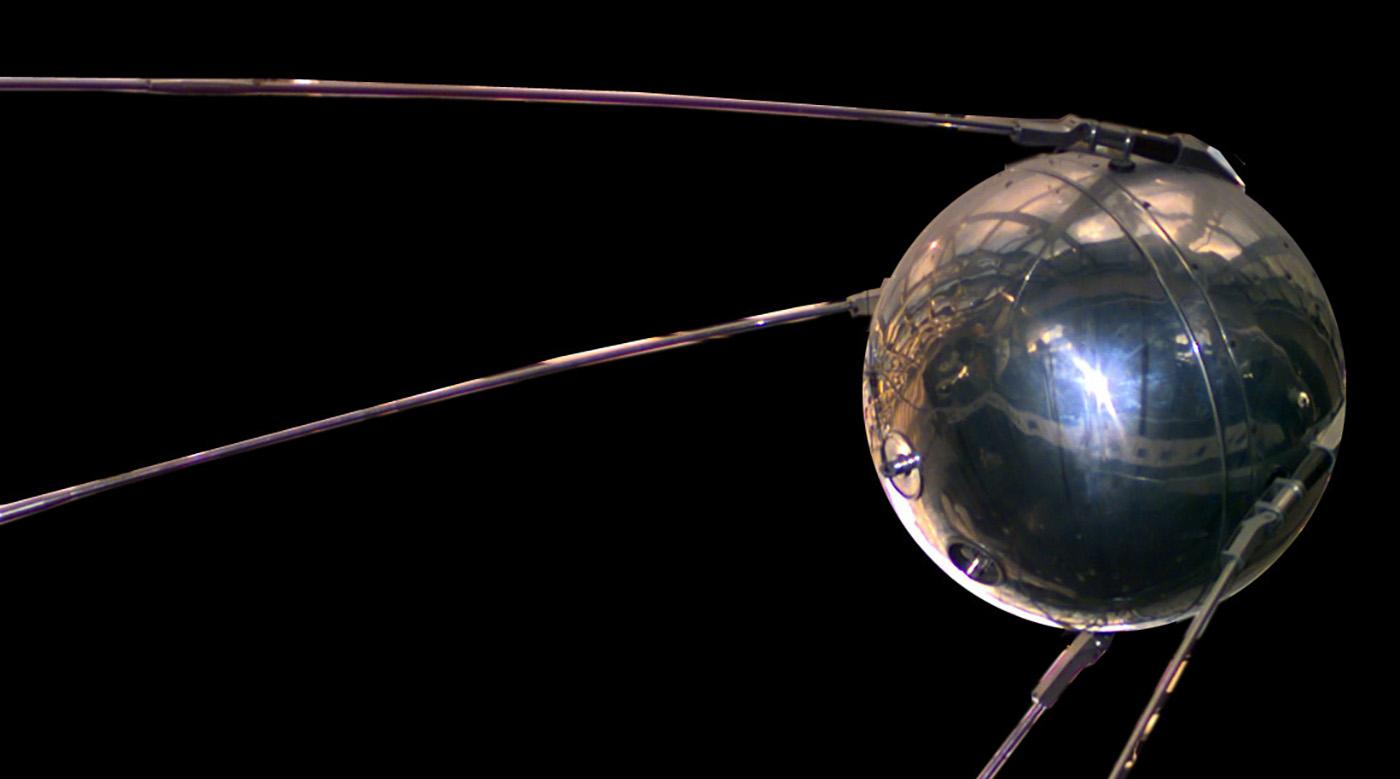Sixty years ago, Sputnik stunned the world.

It was the size of a fitness ball, but its effect was bigger than any bomb.
Sixty years ago, on October 4, 1957, the world awoke to learn that the Soviet Union had launched a satellite into orbit – the first to do so. Sputnik 1 was nearly two-feet in diameter and weighed as much as a middle-aged insurance salesman. Most people were stunned.
Why was this so disturbing? After all, the idea of artificial satellites had been around for a while. Indeed, sci-fi author Arthur C. Clarke had written up a prescient scheme predicting the use of geosynchronous satellites for communications as early as 1945.
The shock, of course, was because Sputnik was launched at the height of the Cold War. Both the Americans and the Soviets had scooped up many of the German rocket scientists after WWII, and while most of their subsequent efforts were motivated by military programs, there were some rocket experts (including Wernher von Braun) who anticipated a wondrous future of both robotic science and human spaceflight. As von Braun famously wrote, he “aimed for the stars.”
But now the U.S. effort had been decisively eclipsed. It’s true that Sputnik 1 (the word means “fellow traveler” in Russian) had only limited utility. Its one-watt transmitter sent out beeps three times a second that were easily picked up by amateur radio operators as well as government receiving facilities, and these gave information about Sputnik’s temperature and motion. But there were no cameras, particle detectors, or any of the other instruments that so often accessorize satellites today. Still, it was in orbit, and nothing built by the U.S. was.
As a kid, the thing that impressed me most was the weight. I knew that America was talking about launching a satellite, but it was expected to be about the size and heft of a watermelon, not the 184 pounds of Sputnik 1. Indeed, the first American artificial satellite (Explorer 1), finally launched three months later, weighed in at a puny 30 pounds. That was decidedly unimpressive given that Sputnik 2, weighing a half ton, had been shot skyward two months before. Adding insult to injury, an ill-fated dog was part of Sputnik 2’s payload, the first creature to be sent into orbit by humans (and the space race’s first victim.)
Bloviating politicians and head-scratching scientists were soon talking of a “missile gap”, and the U.S. did something unprecedented and unrepeated: It greatly increased spending on science education. Improved course materials for high schools were developed, and within a year a new agency to promote space development was set up: NASA. It had money to pay for students seeking advanced degrees in the relevant sciences (indeed, my graduate studies were funded this way.)
The ensuing story of how the missile gap was slowly narrowed, culminating in the triumphal landing of Americans on the moon in 1969, is well known and generally applauded. What’s often forgotten is that this episode highlighted the importance of science education. Which is, after all, the seed bed for science accomplishment.





